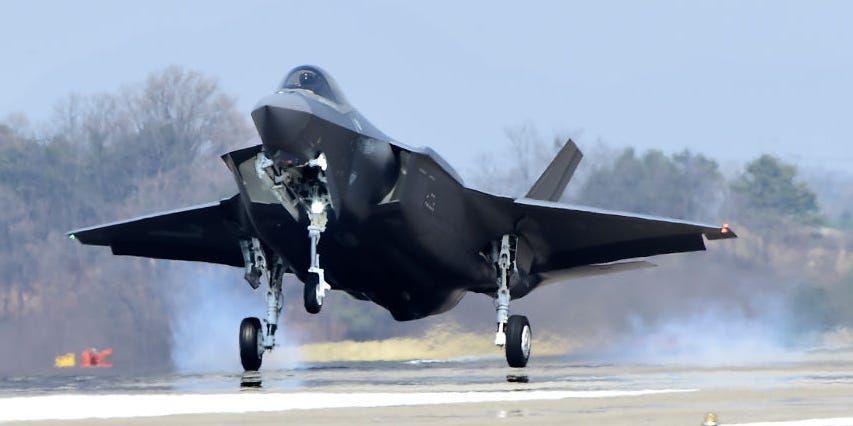
- A South Korean F-35A fighter jet recently made an emergency belly landing after a bird strike, officials said Friday.
- A team of US experts will travel to South Korea to further investigate issues with the avionics and landing gear.
- Emergency belly landings, or gear-up landings, can be very risky maneuvers for pilots.
A recent emergency belly landing made by a South Korean Air Force F-35A stealth jet followed a bird strike to the fifth-generation fighter's left engine intake, Yonhap News Agency reported on Friday, citing air force officials.
The stealth fighter jet crash-landed on the runway at an air force base in Seosan during a training flight on January 4.
Although the need to make an emergency landing followed a bird strike, questions remain about what exactly caused problems with the fighter's aviation electronics system and a landing gear malfunction that made a belly landing necessary.
"Its landing gear should have been down, but it wasn't," a South Korean Air Force official previously told Stars and Stripes. "So, it made a belly landing."
A belly landing, also known as a gear-up landing, carries tremendous risk for the pilot. In this case though, the pilot emerged from the incident unscathed, Yonhap News Agency reported, noting that this incident is the first belly landing reported since the US started exporting F-35A fighter jets abroad.
The US has sent South Korea over 30 F-35A jets with plans to eventually deliver 40 of the fighter variant armed with a cannon and designed specifically for air force operations.
Information on the bird strike came from an initial joint investigation into the incident by the US and South Korea. A team of US experts will visit South Korea to further investigate issues surrounding the avionics and landing gear.

Bird strikes are a costly, yet common, occurrence for both military and civilian aviation.
During the 24-year time period between 1995 and 2019, the US Air Force reported more than 100,000 bird strikes, totalling $817,546,884 in damages, not including injuries, Military Times previously reported.
The Air Force Safety Center at Kirtland Air Force Base in New Mexico told the defense outlet that the Air Force had lost 13 aircraft and recorded 27 deaths because of bird strikes since 1995.
Canadian Geese have caused some of the most expensive accidents and were reportedly responsible for $93.8 million in damages to aircraft between 1995 and 2016. Black vultures caused the second most damage in that time frame, inflicting about $75.7 million, followed by pink-footed geese, American white pelicans, and turkey vultures at $43.3 million, $41.8 million, and $37.8 million, respectively, according to Military Times.
Officials who spoke to South Korean media about the F-35A emergency landing did not provide details on what type of bird the jet ran into or the extent of the damage to the aircraft.